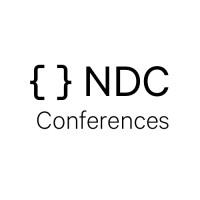Resilient by Design @ NDC Oslo 2025

I’m excited to preview my upcoming NDC Oslo talk, “Resilient by Design”, where I’ll share how to architect Azure systems that not only survive failure but continue running smoothly when disruptions occur (NDC). Join me on to explore core resilience principles, Azure-native tools, and proven best practices for maintaining high availability in real-world scenarios (Microsoft Azure, Microsoft Learn). Whether you’re new to Azure or looking to optimize an existing environment, this session will equip you with actionable strategies to anticipate, mitigate, and recover from failures (Microsoft Learn).
Why Resilience Matters
In cloud-native environments, failure is inevitable-hardware degrades, networks fluctuate, dependencies falter-and without resilience built in, even minor glitches can cascade into major outages (Microsoft Azure, Azure Well-Architected). Designing for resilience means embracing failure modes and planning recovery paths proactively rather than reacting when things break (Microsoft Learn, Azure Well-Architected). By prioritizing resilience, organizations can uphold service-level objectives (SLOs) and deliver reliable experiences to users, even under adverse conditions (Microsoft Learn, Azure Well-Architected).
Core Resilience Principles
- Design for Redundancy: Build duplicate components and failover paths to eliminate single points of failure, leveraging availability zones and regions as your foundation (Microsoft Learn, Azure Well-Architected).
- Implement Multi-Region Strategies: Use active-active or active-passive architectures across regions to maintain service continuity during regional outages (Microsoft Learn, Azure Well-Architected).
- Leverage Failure Mode Analysis: Proactively identify and prioritize potential failure scenarios to focus mitigation efforts where they matter most (Microsoft Learn, Azure Well-Architected).
- Plan for Geo-Redundancy: Configure geo-redundant storage and services (e.g., GRS/RA-GRS) to ensure critical data remains accessible if a primary region becomes unavailable (Azure documentation, Azure Well-Architected).
Azure Resilience Toolkit
- Azure Chaos Studio: Inject controlled faults to validate and harden your applications against real-world issues before they impact customers (Azure Chaos Studio).
- Traffic Management & Load Balancing: Use Azure Traffic Manager and Front Door to intelligently route traffic and failover quickly under load spikes or regional failures (Microsoft Learn, Azure Well-Architected).
- App Service Reliable Web App Pattern: Implement retry, circuit breaker, and cache-aside patterns to improve application reliability and performance efficiency (Microsoft Learn, Azure Well-Architected).
- Well-Architected Framework: Apply the Reliability pillar’s design principles and assessment checklists from Microsoft’s Well-Architected Framework to ensure consistent resilience across workloads (Azure Well-Architected).
Real-World Strategies
We’ll cover real-world strategies for maintaining uptime under pressure, such as automated failover drills, disaster recovery runbooks, and self-healing infrastructure practices (NDC). You’ll see examples of how teams integrate chaos experiments into CI/CD pipelines and leverage telemetry-driven insights to continuously refine their resilience posture (Azure Chaos Studio, Azure Well-Architected).
Join Me in Oslo!
I look forward to meeting you and diving into the art and science of building resilient-by-design solutions in Azure. Don’t miss this chance to level up your resilience strategy-see you at NDC Oslo!



